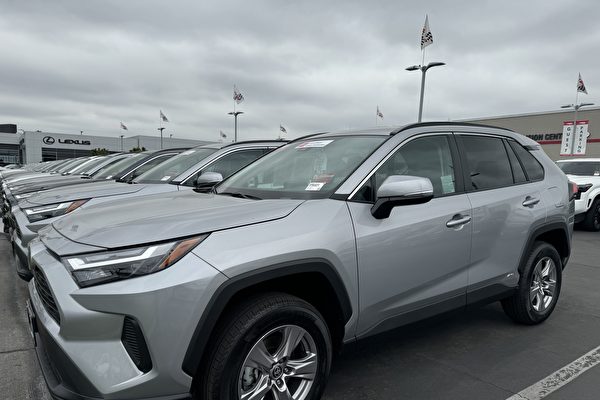In recent months, the American automotive industry has once again undergone changes, with the prices of used cars cooling down and attracting more consumers. As for the new car market, although the persistently high loan interest rates have deterred some consumers, the good news is that prices have dropped, leaving room for negotiation.
“Consumers are coming back,” analysts at the authoritative American automotive trading website Edmunds studied the market trends in the first quarter of 2024 and found that “the combination of increased new car supply and cooling prices has enticed a large number of dormant consumers to return to the car showrooms.”
The latest report from Edmunds website shows that in the fourth quarter of 2023, the average selling price of new cars in the American market held steady at $48,056, dropping to $46,992 in the first quarter of 2024. This marks the first time since the second quarter of 2022 that the average transaction price (ATP) of new cars has fallen below $47,000.
The prices of used cars have also seen a decline. In the first quarter of this year, the average transaction price in the used car market was $27,113, a 4.5% decrease compared to the same period last year. However, it still showed an increase of 33.9% compared to the first quarter of 2019, before the pandemic.
Vincent, who lives in Diamond Bar, just bought a 2024 Toyota Tundra pickup truck through a loan from a car dealership due to work needs. He told reporters, “I compared prices from different Toyota dealerships and ended up saving about $5,000 from this choice. It’s much better than during the pandemic, but the interest rate is high at 7%.”
Reporters visited several different brand car dealerships in Los Angeles, and the sales teams all conveyed similar signals that the market seems to be slowly recovering. Inventory of new cars has increased significantly, prices are negotiable, but there is almost no room to adjust the loan interest rates.
Andrew, a sales manager at a popular brand car dealership in the Chinese community, explained that before the pandemic, there was a lot of flexibility in interest rates, “but now the rates are fixed by banks or dealerships based on consumers’ credit scores, chosen loan terms, selected car models, and the rates are fixed, which we cannot change.”
He further explained, “Of course, some car models may have special rates, such as a minimum rate of 8% for some models, while others can go as low as 5.49%. But that’s it, even if a consumer has a credit score above 800, it’s not possible to go any lower, so the rate is fixed.”
However, in terms of prices, dealerships will provide discounts accordingly. “The era of price markup is over. New cars will be sold at the manufacturer’s suggested retail price (MSRP), and consumers can still negotiate prices a bit like before.” Andrew said that for models with high inventory, dealerships may sometimes offer discounts of $2,000 or $3,000, and for higher-priced models, the discounts might be even greater; if inventory is low, prices can be reduced by a few hundred dollars, sometimes around $1,000 cheaper.
Because of the persistently high interest rates, he mentioned that many consumers are still hesitant, and some consumers who used to lease cars before the pandemic are now choosing to buy outright.
Considering prices, analysts at Edmunds point out that the widening price gap between new and used cars is prompting more consumers to purchase used cars.
“Before substantial discounts on new cars make a comeback, used cars will continue to provide a service that new cars cannot: affordable commuting tools.” Analysts found that used cars are flying off the dealerships at a record speed. In the first quarter of 2024, the average turnover period for used cars was 37 days, while the average turnover period for new cars was 52 days.
Furthermore, a large number of consumers are starting to trade in their old cars for new ones. These buyers are utilizing their vehicle assets to purchase more expensive cars.

